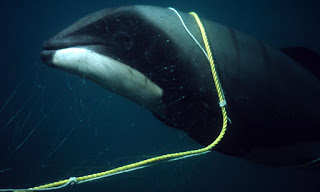Hello again, welcome back to animals under threat. Today, we will be covering the largest carnivore in the arctic circle and is considered to be the largest bear species to be alive currently. This species of bear is under threat from loss of sea ice due to global warming, pollution, and human interaction. Give a warm welcome to the Polar bear (Ursus maritimus).
Polar bears are characterized by their white fur, long neck, small head, rounded ears and short tail. Male polar bears are larger than the females as they can weigh up to 410-720 kg or 900-1,600 pounds. Sometimes nicknamed the sea/ice bear, polar bears live throughout the arctic region and travel across ice floes to search for seals. It has not natural predators or rival species and has no fear of humans (Britannica.com, 2019).
diagram by https://www.britannica.com/animal/polar-bear
polar bear's fur and skin by Jon
Aars / Norwegian Polar Institute / WWF-Canon
As polar bear has no fear of humans, they enter human settlements to find food and exploring the area. This has led to conflict between humans and polar bears as polar bears are shot and killed by humans defending their homes and food (Wilder et al, 2017). Due to the increase in global warming, the sea ice that the bears depend is decreasing which makes it harder from the bears to hunt and have to swim longer leading to drowning. With pollution from human settlement such as plastic bags been found in polar bear stomach leading to death of the animal due to eating the plastic (Regehr et al, 2016).
Next time, we will be covering a species of sea snake that has an unusual name.
References
https://www.britannica.com/animal/polar-bear retrieved 21/12/19
https://www.nationalgeographic.com/animals/mammals/p/polar-bear/ retrieved 21/12/19
Regehr, E.V., Laidre, K.L., Akçakaya, H.R., Amstrup, S.C., Atwood, T.C., Lunn, N.J., Obbard, M., Stern, H., Thiemann, G.W. & Wiig, Ø. 2016, "Conservation status of polar bears (Ursus maritimus) in relation to projected sea-ice declines", Biology letters, vol. 12, no. 12, pp. 20160556.
https://www.worldwildlife.org/species/polar-bear retrieved 21/12/19
Wiig, Ø., Amstrup, S., Atwood, T., Laidre, K., Lunn, N., Obbard, M., Regehr, E. & Thiemann, G. 2015. Ursus maritimus . The IUCN Red List of Threatened Species 2015
Wilder, J.M., Vongraven, D., Atwood, T., Hansen, B., Jessen, A., Kochnev, A., York, G., Vallender, R., Hedman, D. & Gibbons, M. 2017, "Polar bear attacks on humans: Implications of a changing climate", Wildlife Society Bulletin, vol. 41, no. 3, pp. 537-547.
picture references
polar bear skin by Jon Aars / Norwegian Polar Institute / WWF-Canon
polar and cub by By AWeith



































